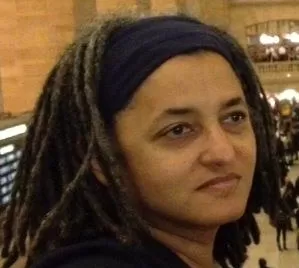Lisa Feldstein
Lisa Feldstein seeks to use land use as a tool for social and economic justice.
Contributed 17 posts
Lisa Feldstein is a Doctoral Candidate at the Department of City and Regional Planning at UC Berkeley. She is a 2012 Robert & Patricia Switzer Foundation Fellow, a 2012 Fellow at the Institute for the Study of Societal Issues, the 2010 recipient of The Robert A. Catlin/David W. Long Memorial Scholarship, and the 2009 recipient of the Friesen Fellowship for Leadership in Undergraduate Education. Lisa is formerly the Senior Policy Director with the Public Health Law Program, in which capacity she directed the organization's Land Use and Health Program. The project engages advocates in the land-use decision-making process throughout California, develops tools for training advocates about the relationship between the built environment and public health, and provides technical assistance for creating and implementing land use policies that support healthier communities. Lisa has worked on affordable housing and land use issues, with a focus on low-income communities, for nearly two decades. She works as an independent consultant providing technical assistance to local governments and nonprofits on a broad range of housing, community development, and land use-related issues. Prior to her work as a consultant, she was a loan officer with the Low-Income Housing Fund (Now the Low-Income Investment Fund). She also spent five years with the San Francisco Mayor's Office of Housing. Ms. Feldstein also served as a San Francisco Planning Commissioner from 2002-2004, where she was a strong advocate for community-based planning that incorporated such beneficial built components as open space and grocery stores. Ms. Feldstein graduated Magna Cum Laude from the University of Massachusetts at Boston with a B.A. in American Studies (Urban Focus), and earned her J.D. from the Boalt Hall School of Law at the University of California at Berkeley. She lives in San Francisco with her husband and their daughter. When not studying, writing, volunteering, or hanging out with her family, she loves to bake and to read fiction. A New York City native, Lisa loves cities.
Legibility and Food Access
<p> Returning to San Francisco from a trip to New York City, I ruminated on my first experience of staying in midtown in the city in which I was raised. The city is different, of course. Times Square has fulfilled its <em>Blade Runner</em> destiny, and blue Grecian “Greatest Coffee in the World” cups have been supplanted with those from Starbucks. What stayed with me, however, was a brief exchange with another attendee of the same conference for which I was in town. “Everything is so expensive” she lamented. “I see people with yogurts and sandwiches and other things that don’t seem to cost too much, but I don’t know where they get them.” “Oh, there’s plenty of stuff around here” I replied. “You just have to look.” </p>
Streets of a multicultural city
This past weekend I attended a memorial service for a local activist. Eric Quezada was important in many planning-related issues here in San Francisco – how we create space that reflects the cultural traditions of our large immigrant communities, the importance of preventing displacement of low-income people, the development of affordable housing and institutions that meet the needs of all of our citizenry. I had known Eric for many years, but had the privilege of working most closely with him when I served on our city’s Planning Commission and he was a lead organizer in the Mission District, an historically Latino neighborhood threatened by dot-com fueled gentrification. In his short 45 years on earth, Eric touched the lives of thousands here and around the world.
Food Trends
<!--StartFragment--><p class="MsoNormal"><span style="font-family: 'Big Caslon'"><span style="white-space: pre" class="Apple-tab-span"> </span>A comment I hear frequently from planners is that the focus on food and planning is “trendy”. I must admit that this puzzles me quite a bit. Professional planners in rural areas have concentrated on planning for agriculture – food planning – for decades. Before we had professional planners, human populations planned their communities around food, whether they were planning how best to follow herds for hunting, structuring early agricultural societies, or developing the first cities where food proximity and trade were central considerations.</span></p><p class="MsoNormal"> </p>
Navigating by Intuition
<!--StartFragment--><p class="MsoNormal">As a lifelong urbanite, I’ve always felt comfortable learning cities “by Braille.” I put on my walking shoes and wander, making mental maps as I go. I experience serendipity, yet can generally intuit where things are likely to be – the CBD, the government center, nightlife.</p><p class="MsoNormal">This summer our family spent time in Berlin, Venice, Florence, and Paris. Of the four, Paris was the only one I’d been to before. By the time we got there, it was like greeting an old friend.</p>
Traveling beyond LOS (By foot? On a bike?)
<p> Let me start with a disclaimer: I am not a transportation planner. At the points where transportation planning shares borders with engineering, I tend to zone out and start doodling in the margins. I do, however, have a lifelong interest in transportation, which is why I share the excitement of some of my more transportation-focused colleagues about potential changes in how California measures transportation impacts of projects. </p>

























